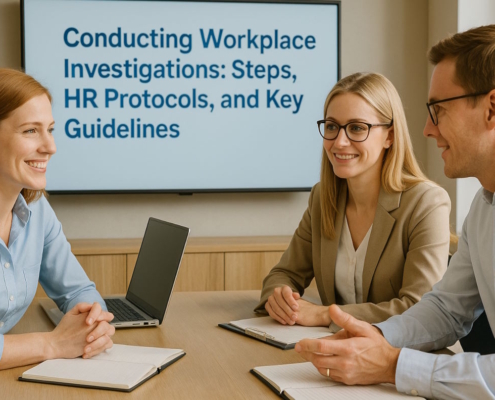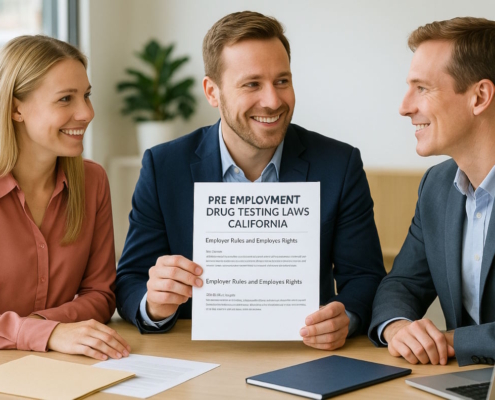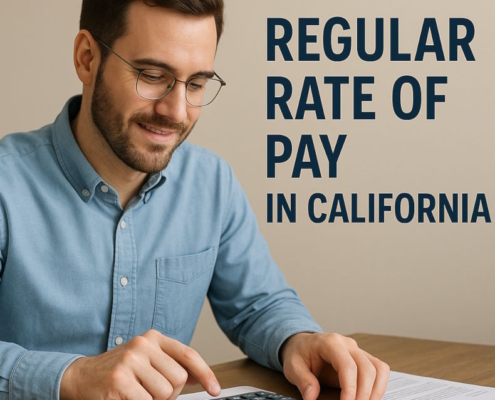Fifteen case studies on HR analytics
1. Reducing costs by anticipating employees’ resignations
The Wall Street Journal broke the story of “The Algorithm That Tells the Boss Who Might Quit” on March 13, 2015. The report delved into the methods used by Credit Suisse to foresee which employees would decide to leave the organization. The staff churn analytics used in that case were some of the first ones implemented.
In addition to predicting who would leave, the Credit Suisse analysts could also pinpoint the reasons behind their potential resignation. The goal of providing managers with this anonymized data was to help them better retain employees by lowering attrition risk factors.
Particular managers also received training to keep high-performing workers who were at high risk of leaving. Credit Suisse saved around 70 million dollars per year as a result of this approach.
2. Correlating customer participation with sales
The Harvard Business Review presented yet another excellent case study on human resource analytics in the workplace. Writing about their experiences at many major US companies, the authors of Competing on Talent Analytics detail their findings.
Their focus was on studying how engagement relates to bottom-line results. Despite its status as an HR holy grail, engagement’s actual impact is notoriously difficult to pin down.
The writers state that there are businesses that can exactly determine the worth of a 0.1% improvement in engagement among workers at a certain store. They use Best Buy as an example, a company where a 1% boost in engagement leads to a yearly operational income per store of nearly $100,000.
Best Buy decided to conduct employee engagement surveys every three months instead of once a year because of the importance of this relationship.
3. Employee Departure from Experian
Experian had issues with employee turnover, which was 3-4% greater than the company’s desired level.
They calculated the likelihood of a flight by using a prediction model with 200 variables, such as team composition and size, supervisor effectiveness, and commuting time.
Teams larger than ten to twelve members posed a risk. Also, the analytics group found things that made people more likely to leave: for example, they found that an individual’s immediate flight risk increased as their distance from the office increased.
Multiple locations saw the model’s rollout, each with its own subtle tweaks to the predictive algorithm. Thanks to these insights and sound management techniques, attrition decreased by 2-3% in the last 18 months, saving an estimated eight to ten million dollars.
4. IBM’s Flight Risk
The high turnover rate for some mission-critical positions at IBM prompted a comparable investigation. The workforce analytics team used IBM’s Watson machine learning capabilities to create an algorithm that combined data from many sources, including recruiting data, tenure, performance, salary, role, geography, job function, and more.
As an additional metric, the business used its Social Pulse to gauge staff morale. The premise here was that employees’ participation in social media would decline when they are contemplating quitting their current position.
Critical role turnover decreased by 25% and the investment returned 300 million dollars over 4 years. Productivity has increased and recruiting costs have decreased, as stated in the report.
5. Maintaining a core team at Nielsen
Nielsen made a similar model for making predictions in 2015. Gender, age, length of service, and management evaluation were among the twenty variables included in the initial predictive model. They gradually added more variables.
They checked with first-year workers to make sure they had their key contact points. For instance, a message would be triggered if the initial check-in with their boss did not occur within a specific time frame following hiring. There was strong evidence that this was a necessary factor for first-year retention.
Promotion was a major incentive for employees to remain, but horizontal moves were just as powerful.
The most important result was that the company was able to transfer 40% of its employees to a different position by reaching out to those who were most likely to leave in the next six months. An associate’s likelihood of remaining with the company increased by 48% when they made these lateral transfers.
6. Cutting down on car accidents
In Zimbabwe, researchers conducted a remarkable study on the effects of thorough hiring evaluations. One local transport company aimed to lower the expense of their drivers’ road traffic accidents (RTA). In addition to endangering the lives of those on board, these mishaps caused significant delays in transportation and incurred high repair costs due to physical damage.
A local consulting firm looked at the possibility that psychometric tests could identify which individuals were more likely to get in a car accident. If these elements could be pinpointed, they may be utilized as standards for hiring new employees.
They learned a lot of very useful things. One interesting finding is that drivers’ accident risk was unaffected by a common defensive driving certificate that was mandatory for every driver.
A person’s tendency to be involved in accidents was associated with their attention levels, Reactive Stress Tolerance (RST), and the length of time they had their license. Prior to hiring a driver, it was reasonable to test their baseline RST and concentration. It was also a good idea to hire more seasoned drivers.
7. Finding the sweet spot for employee staffing
Another interesting case study in HR data was about finding the best number of employees. A major Zimbabwean mining firm was worried about going bankrupt due to overworked or understaffed divisions.
The experts used an intriguing method to analyze over- and understaffing. Using data collected over 17 quarters, they compared a business unit’s personnel count to its business activity.
With a R squared value of 70.34 percent, the correlation between staff count and company activity was very significant. In other words, the amount of workers accounted for 70.34 percent of the company’s operations. The team determined which departments had too many or too few employees by charting these two dimensions.
Extra workers were laid off. Surprisingly, the breakeven point for redundancy costs was determined to be just two months. By the third month, the company had begun to see a positive financial impact. It was also possible to reassign laid-off workers to comparable positions in departments that were understaffed.
8. Employee Training with A/B Testing
Rob van Dijk and Tony Brugman wrote a brief case study from their consulting work.
A big Dutch fast-moving consumer goods store employed people analytics to determine how effective their training was. The experts determined that the shop’s bottom line improved after staff received training. This was quantified through A/B testing. The return on investment (ROI) for their training program was four hundred percent in the first year alone.
9. Days off due to illness at E.ON
Human resource data also helped E.ON deal with employees who weren’t showing up for work. This German energy company with more than 43,000 employees had more absenteeism than the norm.
The analytics group came up with 55 theories, put 21 to the test, and found 11 to be true.
According to one example in the paper, selling back unused vacation days did not lead to higher absenteeism rates. However, a lack of a long vacation or taking a day or two off occasionally over the year made people miss more work. This information was given to supervisors to strengthen holiday approval rules.
10. Clarks Employee Engagement
Clarks, a shoe store, examined the link between employee engagement and financial success. They started by asking, “Is there any connection?”
Since the organization had previously recorded above-average engagement levels, it investigated the ROI of engagement and tested the hypothesis that it would decrease as engagement levels increased.
The group collaborated with statisticians who oversaw the retailer’s DPS. The study had 450 data points on company performance in total.
The paper stated that the results proved the existence of a relationship. Engagement is the key to improved company results. Clarks saw a 0.4 percentage point boost to their company performance for every one percentage point increase in engagement.
The group also conducted a quantitative and qualitative analysis of the traits of the top 100 performing stores in order to draw conclusions and make the data more actionable. They discovered that the business had an ideal staff size and that a manager’s tenure significantly predicted performance. This meant that performance would often drop after a store manager changed.
The group used these findings to design a system for peak-performing retail locations. They also developed a toolset for engagement that managers could utilize to boost output.
The Chief People Officer of the organization claims that the outcomes are self-explanatory. Year after year, the UK retail division routinely surpassed both internal goals and external benchmarks. Also, their market share expanded.
11. Shell Employee Engagement
The same thing happened at Shell, where employees’ active participation led to better safety procedures and ultimately higher company performance.
A crucial industry safety criteria, “recordable case frequency,” decreased by 4% with just a 1% boost to employee engagement. There was a direct correlation between safety performance and corporate performance.
12. HR influencing the success of the store
In another excellent case study of people analytics, a major restaurant chain was experiencing a decline. The people in charge didn’t know why. They had some data, but they couldn’t put it into action.
They enlisted the help of a group of consultants to look into the matter and draw conclusions from the data.
The group opted to conduct its own survey measurement due to a lack of reliable data. This case study was unique because they veered away from the typical engagement survey. The important business consequences were instead their initial focus. They found three main results, which were:
- Number of customers
- Client satisfaction
- Employee loyalty
A rise in these three indicators would have a positive effect on the company’s performance.
Following this, they implemented an engagement survey with an emphasis on business, where they:
- Connected the dots between employee results and the tangible company benefits.
- Give top priority to the elements that affected company results the most.
- Show what changes to these things would mean for your business.
- Pay close attention to the variables that had the greatest effect on front-line managers.
The team was able to see very clearly which factors contributed most to company performance—and which factors front-line managers should prioritize—by mapping these elements on their own scores and the effect they have on the business outcomes.
13. Benefits and pay at Clarks
In the second case study about people analytics, Clarks used compensation and benefits analysis to make sure that their workers got the best rewards possible.
According to the study, they changed the package accordingly”after getting a more detailed understanding of people’s values. They did so by asking which perks they would be willing to sacrifice.
Offering individuals a modest sum to put toward their own growth has the potential to increase satisfaction by as much as fifteen percentage points. In addition to saving money for the business, employees wanted the option to sell their vacation days.
14. Cisco announces the launch of a new office
The utilization of in-house data has been the primary emphasis of several of these HR analytics case studies. The same study also contains an analysis that heavily relies on external data.
In order to determine the most suitable locations for future offices, Cisco has used demographic data. They were able to grow in regions with fewer bigger competitors for talent by integrating data on things like office space utilization rates, the cost and availability of essential personnel, and the availability of university grads.
Additionally, Cisco used this same data to identify areas with an abundance of qualified personnel when choosing a new office.
15. In the event of a hostile takeover, Unilever implemented automated listening
The workforce analytics team at Unilever demonstrated the viability of analytics during crises when Kraft Heinz tried to take it over in early 2017.
In order to identify possible areas of savings, the team examined the organization’s networks and developed models.
Furthermore, the group could monitor the dispositions and emotions of the workers. They were able to observe the staff’s responses to Unilever’s defensive measures in this way. During the crisis, these realizations were crucial in guiding decision-making.
As per Clement, the vice-president of Human Resources, they were able to demonstrate that they were in a better position than Kraft Heinz to utilize their business’s strengths by providing information to support their growth plans and help put together cost reduction plans.
Bonus: Human resources analytics for a startup
As this additional case study shows, even smaller firms can benefit from HR analytics. The realty development company Intracorp had fewer than 100 workers. However, due to communication issues caused by silos, the dispersed teams made mistakes, misunderstandings, and failed to meet deadlines.
Intracorp aimed to teach their leaders and teams without disrupting their daily operations. They accomplished this by identifying which areas of development were most pressing. Leaders and team members could see how they were doing thanks to the diagnostics and process tracking. The result was a lower cost of lost productivity, which they were able to quantify.
There was a 10% increase in output after implementing this metric system. Spending $1 on training would result in $3.20 back in lost productivity.
In addition, there was a 128% improvement in retention and a 128% increase in information sharing after weekly 60-minute live virtual content sessions. People were immediately discussing it, sharing their insights, and “a-ha” moments in the coffee room following the seminar. In addition to a 50% decrease in meeting inefficiencies within 30 days, one-on-one leadership coaching was significantly more successful in raising retention.
Training with well-defined objectives and intelligent monitoring of progress toward those objectives can thus yield excellent results.































